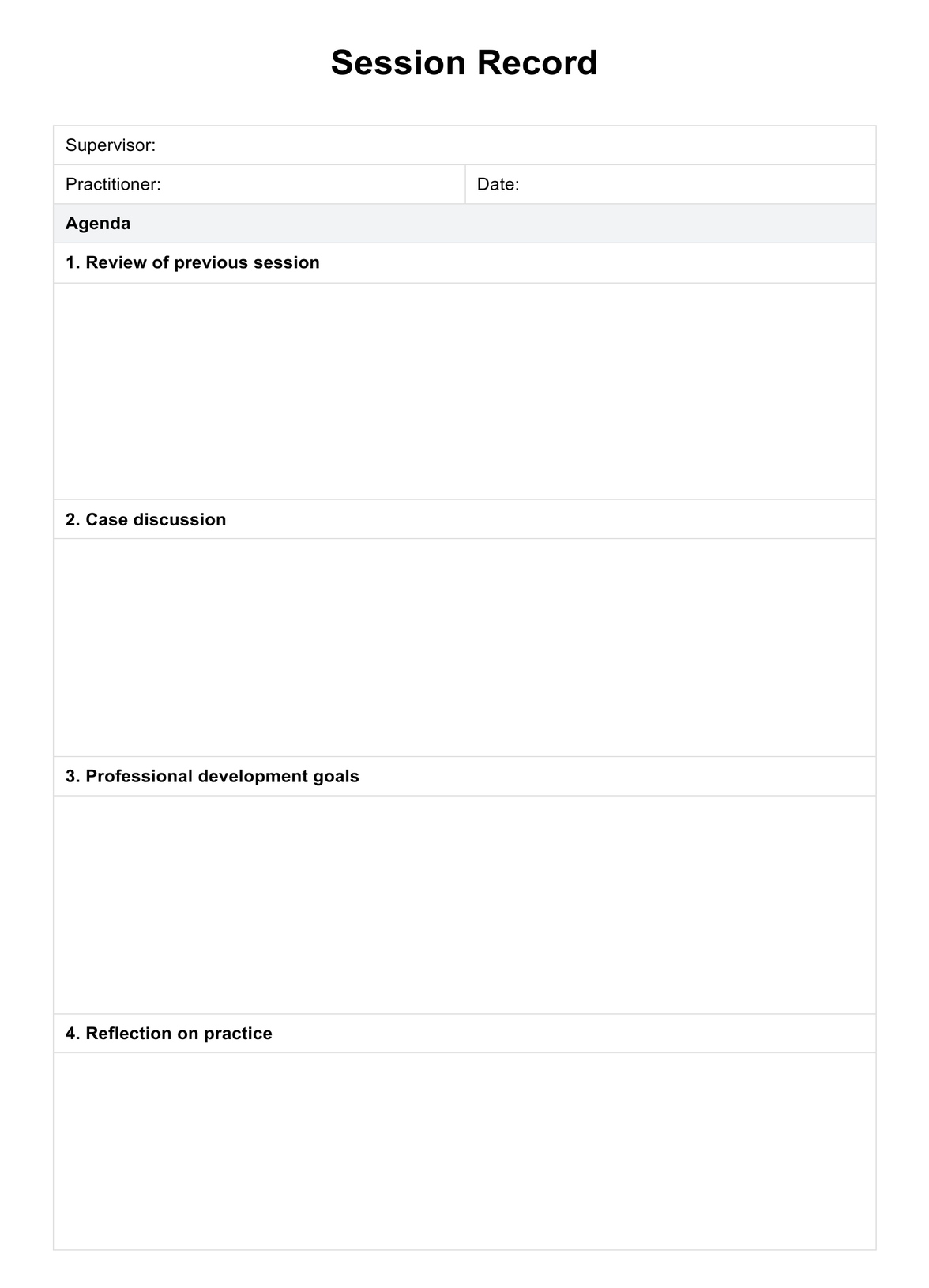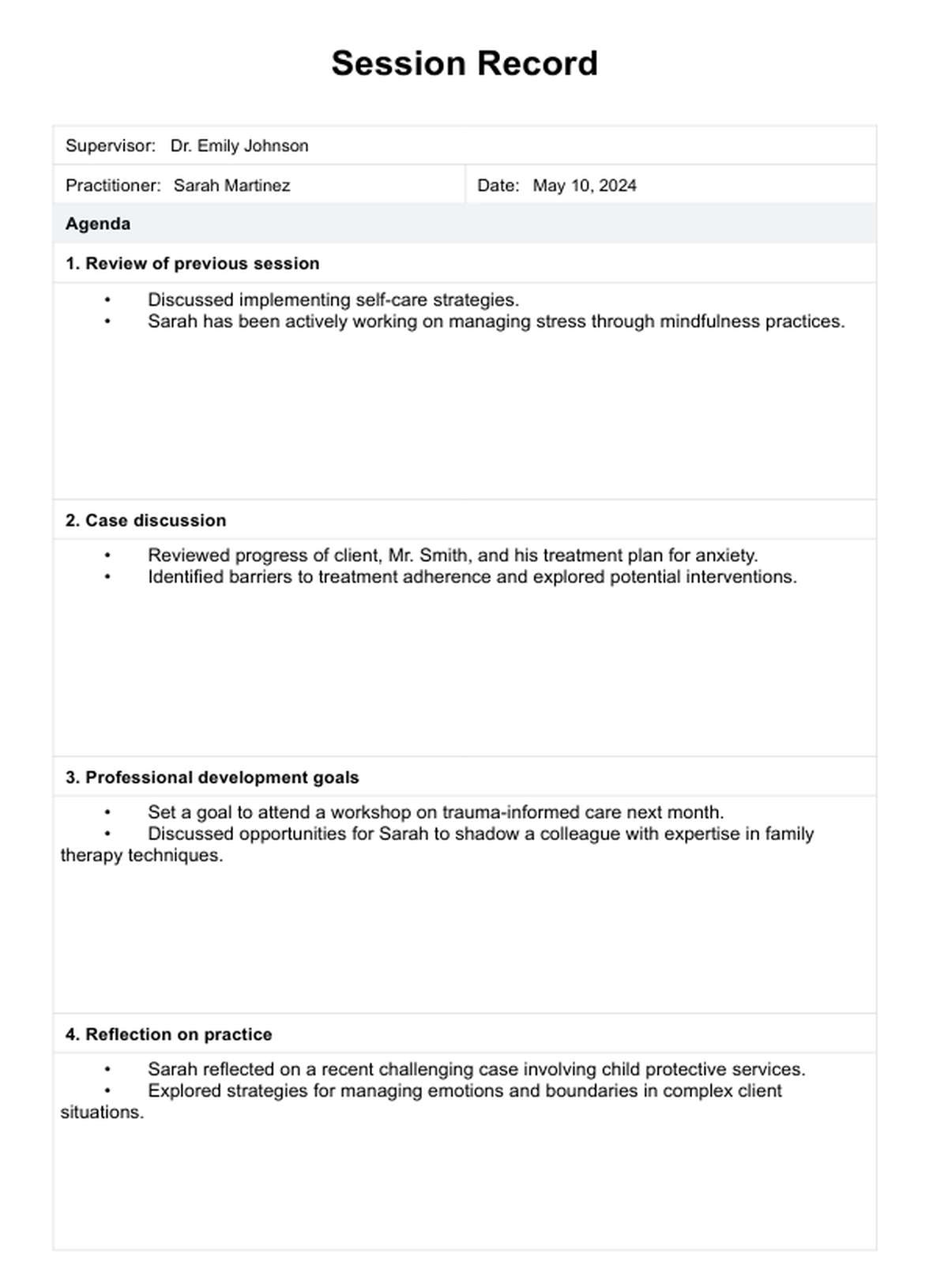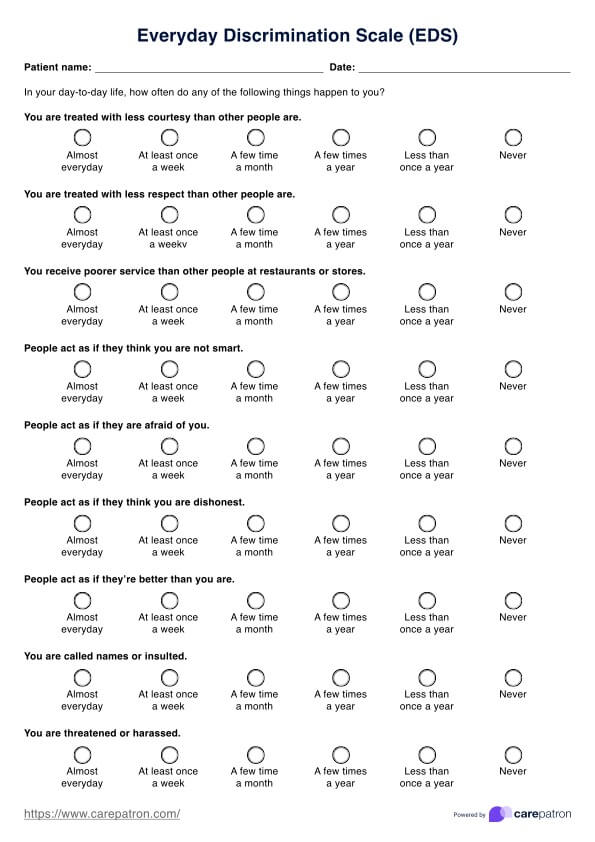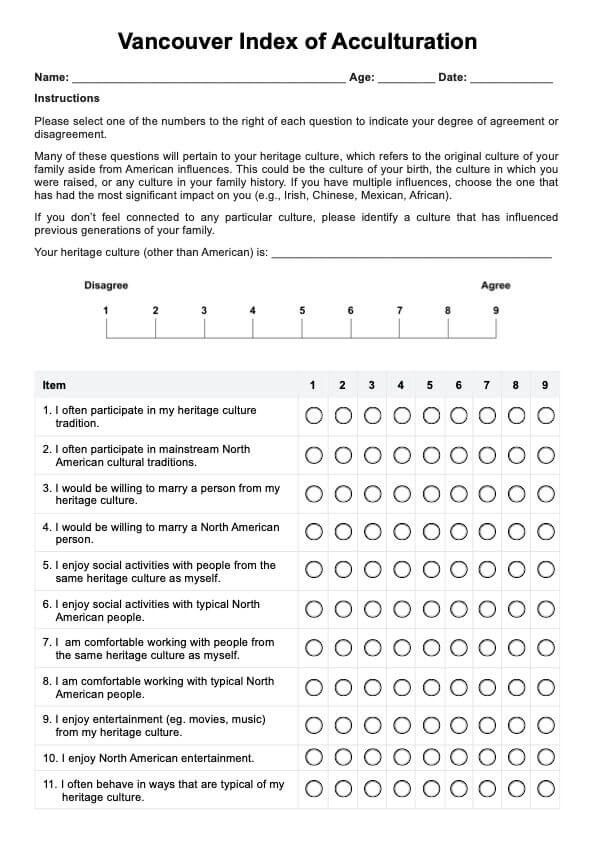Supervision Template Social Work
Access Carepatron's free PDF of a supervision template for social work. Improve your social work practice with this helpful tool.


Importance of supervision in social work
Supervision is a cornerstone of effective social work practice, playing a vital role in ensuring the well-being of both practitioners and their clients. At its core, supervision involves regular meetings between a social work practitioner and their supervisor to discuss cases, professional development, and any challenges encountered in their work. These supervision sessions provide a structured framework for reflection, support, and learning.
Clinical supervision offers a dedicated space for social workers to explore complex cases, ethical dilemmas, and personal reactions within a safe and confidential environment. Through group supervision, practitioners benefit from collective wisdom and diverse perspectives, fostering a sense of camaraderie and shared responsibility. You can use this clinical supervision template to elevate your practice and client success.
Supervision is particularly crucial in the realm of mental health. It ensures practitioners maintain their well-being while effectively supporting clients in their treatment journeys. A supervisor guides practitioners in developing treatment plans, honing their clinical skills, and addressing any concerns that may arise during client interactions.
Furthermore, supervision is a platform for professional development and training, allowing practitioners to stay abreast of the latest research, interventions, and best practices. Supervisors log discussions and provide constructive feedback to help practitioners responsibly enhance their skills and competencies.
Supervision Template Social Work Template
Supervision Template Social Work Example
What is a social supervision template?
A social supervision template is a structured framework designed to guide and facilitate supervision sessions between social work practitioners and their supervisors. It serves as a blueprint for conducting effective and productive supervision meetings, ensuring that key aspects of professional development and client care are addressed systematically.
At its core, a social supervision template outlines the objectives and goals of supervision sessions, providing a roadmap for practitioners and supervisors to follow. It includes sections discussing client cases, treatment plans, and progress toward established goals. Additionally, the template may incorporate areas for practitioners to reflect on their professional development, identify improvement areas, and seek supervisor guidance.
Group supervision may also be facilitated using a social supervision template. This allows multiple practitioners to collaborate, share insights, and support one another in their professional growth. This collaborative approach fosters a sense of community and collective responsibility within the team.
What is included in a supervision template for social workers?
A supervision template for a social worker typically comprises several key components, each serving a specific purpose in guiding the supervision process and facilitating professional growth. Here's an overview:
Treatment plan review
The template includes a section dedicated to reviewing and discussing client treatment plans. This allows practitioners to evaluate progress, address any concerns, and make necessary adjustments to ensure effective implementation of interventions.
Supervisor feedback
Practitioners receive feedback from their supervisor on their performance and progress towards established goals. This feedback helps practitioners identify areas for improvement and further develop their skills.
Communication strategies
Effective communication is vital in social work practice. The template may include guidelines for improving comms skills and fostering positive interactions with clients, colleagues, and other stakeholders.
Professional development goals
A social worker consults with their supervisor to set professional development goals. These goals may include acquiring new skills, pursuing further training opportunities, or enhancing existing competencies.
Case discussion
Practitioners discuss specific cases with their supervisor, exploring challenges, ethical considerations, and strategies for effective intervention. This collaborative approach promotes reflective practice and ensures comprehensive client care.
Progress evaluation
The template includes mechanisms for evaluating progress toward established objectives and goals. This evaluation allows practitioners and a supervisor to track progress and make informed decisions about future interventions.
Addressing concerns
Practitioners have the opportunity to address any issues or challenges they may encounter in their work. The template provides a structured framework for discussing these problems and identifying appropriate solutions.
Employee well-being
The welfare of social work practitioners is paramount. The template may include provisions for discussing stress management, self-care strategies, and maintaining a healthy work-life balance.
How to use our social work supervision template?
Carepatron's social work supervision template is a straightforward process designed to streamline supervision sessions and enhance the professional development of social work practitioners. Here's a step-by-step guide on how to use our template effectively:
Step 1: Access the template
Access the Carepatron platform and navigate the social work supervision template. The template is readily available within the platform's library of resources.
Step 2: Customize for your needs
Tailor the supervision template to suit the unique needs and requirements of your practice setting. This may involve customizing sections, adding specific prompts or questions, and incorporating organizational branding elements.
Step 3: Schedule supervision sessions
Establish a regular schedule for supervision sessions with your supervisor or team members. Use the template to structure these sessions, ensuring that key areas such as case discussion, goal setting, and progress evaluation are covered comprehensively.
Step 4. Prepare in advance
Before each supervision session, take some time to review the template and gather any relevant materials or information about client cases, treatment plans, and professional development goals. This preparation ensures that the session is focused and productive.
Step 5: Facilitate meaningful discussions
Use the template as a guide during the supervision session to facilitate meaningful discussions with your supervisor or team members. Engage in open dialogue, share insights and reflections, and seek guidance on areas where support is needed.
Step 6: Document key takeaways
As the supervision session progresses, log key takeaways, action items, and decisions made regarding client care, professional development, and any other relevant topics. This SOAP notes for social workers is a valuable reference for future sessions and ensures accountability.
Step 7: Follow up on action items
After the supervision session, follow up on any action items or recommendations discussed during the meeting. Implement changes as necessary, monitor progress, and communicate any updates to your supervisor or team members.
Step 8: Reflect and adapt
Regularly reflect on your experiences using the supervision template and solicit feedback from your supervisor or team members. Use this feedback to adapt and refine your approach to supervision, ensuring continuous improvement in your practice.
Benefits of having a Supervision Template Social Work
Using a Supervision Template Social Work offers numerous advantages for social work practitioners and their organizations. Let's explore five key benefits:
Enhanced organization and structure
Utilizing a supervision template provides a structured framework for supervision sessions, ensuring that essential topics such as case discussion, goal setting, and progress evaluation are consistently addressed. This organization fosters clarity and coherence in supervision meetings, making them more productive and efficient.
Improved accountability
With a supervision template in place, practitioners and supervisors have a clear record of discussion topics, action items, and decisions made during supervision sessions. This documentation promotes accountability, ensuring that identified tasks are completed, progress is monitored, and goals are actively pursued.
Facilitated communication
Using a supervision template encourages open communication and collaboration between practitioners and supervisors. It provides a common reference point for discussing client cases, sharing insights, and seeking guidance on challenging issues. This facilitated communication strengthens teamwork and promotes a culture of mutual support.
Consistency and standardization
Supervision templates promote consistency and standardization in supervision practices across different practitioners and teams. By adhering to a common framework, organizations can ensure that supervision sessions are conducted systematically and equitably, regardless of individual preferences or styles.
Documentation and record-keeping
Supervision templates are valuable documentation tools, allowing practitioners to record key details, observations, and recommendations discussed during supervision sessions. This documentation is essential for maintaining accurate records of client progress, treatment plans, and professional development goals. Additionally, it provides a comprehensive reference point for future sessions and can be easily shared with relevant stakeholders.
Tips for social work supervision
Effective social work supervision is essential for supporting practitioners' professional development and ensuring high-quality client care. Here are five key tips for conducting successful supervision sessions:
Establish clear objectives
Begin each supervision session by establishing clear objectives and goals. Clearly define what you hope to accomplish during the session, whether it's discussing specific cases, setting professional development goals, or addressing challenges encountered in practice.
Foster a supportive environment
Create a supportive and non-judgmental environment where practitioners feel comfortable discussing their experiences, concerns, and challenges. Encourage open communication and active participation, and provide constructive feedback to support practitioners' growth and development.
3. Encourage reflective practice
Promote reflective practice by encouraging practitioners to critically analyze their experiences, actions, and decisions in client work. Use supervision sessions as opportunities for self-reflection, exploring the impact of interventions, and identifying areas for improvement.
4. Utilize strengths-based approaches
Adopt strengths-based approaches in supervision, focusing on practitioners' strengths, talents, and successes. Acknowledge achievements and positive outcomes, and encourage practitioners to leverage their strengths in addressing challenges and achieving their goals.
5. Emphasize self-care
Prioritize self-care and well-being in supervision discussions. Recognize the importance of maintaining a healthy work-life balance, managing stress, and seeking support when needed. Encourage practitioners to prioritize their own well-being to sustain their effectiveness and resilience in their work.
Commonly asked questions
Supervision in social work should be collaborative, supportive, and reflective, providing practitioners with a safe space to discuss cases, seek guidance, and enhance their professional development.
The pillars of supervision in social work include accountability, reflection, skill development, support, and ethical practice, ensuring practitioners receive comprehensive guidance and support in their work.
Supervision sessions are typically structured around specific agendas, including case discussions, goal setting, professional development planning, and reflection on practice experiences.















-template.jpg)























































































